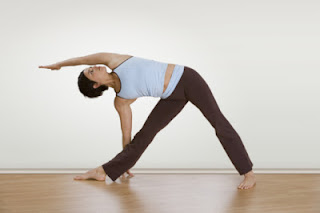The
connection between yogic practices and superior heart health has long been
established. People who practice yoga training regularly live healthier lives and report
fewer debilitating conditions. While in practical terms this superficial
explanation is not enough to recommend yogic medicine for heart problems specifically, delving
deeper into these benefits provides greater clarity on the subject.
The
heart is the hub of the circulatory system. From the heart blood flows blood to and
from every major organ in the body. Since hatha yoga directly influences the
circulatory system in a beneficial way, certain asanas have a positive impact on the circulatory system.
One asana said to be particularly good for the heart is the Bow pose. In the
Bow pose, a person lays prone on the ground and slowly lifts their feet over
their head until their hands and feet finally meet. This is an advanced
position that is only completed after many hours of practice. During even
elementary attempts at this pose, the heart pumps blood fully throughout the
body.
Another asana, which helps the heart, is the traditional Downward Facing Dog pose. Gurus as well as beginners know this pose. Less stressful than the Bow
pose, Downward Facing Dog still places a considerable amount of energy into the
heart and circulatory system.
Upward
Facing Dog, the reverse of the downward position, simply completes the
alternate half of Downward Facing Dog. Practicing both poses in a regular
routine insures that all the necessary muscle groups are worked evenly, and
that the benefit to the heart is distributed in a uniform matter.
Yoga poses from the very basic to the most advanced all provide benefits to the
heart and circulatory system. As these benefits are cumulative, the gains made
from these poses increases over time. Since yogic science is a therapeutic
one that can be applied in almost any situation, anyone can attain these
benefits.
Modern
science makes a distinction between the heart as the center of the circulatory
system and the mind as the seat of reason and logic. Yogic science is not as
concerned with this distinction. What this means in yogic terms are that asanas designed to have an impact on the physical heart are also capable of
affecting the body, intellect, and the emotions.
Conclusion
Conclusion
Current
medical practice is coming around to this holistic approach, which has been adhered to
by yoga practitioners for many generations. The line between the body and the mind becomes less distinct as medicine matures and begins to accept this as
fact. Other forms of exercise also seem as uniquely capable of improving the heart, but jogging may not be the best of choices for skeletal health. Additionally, Yoga training is a healthy lifestyle based upon eating in moderation, avoiding physical self-abuse, reducing stress, and self-discipline.
© Copyright 2013 – Aura Wellness Center – Publications Division
Visit the yoga community and see videos, demonstrations, blogs, forums, and lectures related to affordable 200 hour yoga instructor training programs and specialized continuing education programs.

